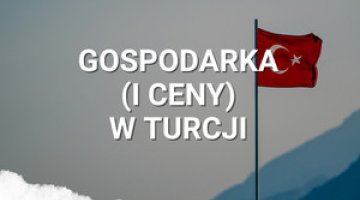Turkey connects Europe and Asia with a tunnel under the Bosphorus
On 29 October, the 90th anniversary of the Turkish Republic, the Marmaray tunnel connecting the Asian and European banks of the Bosphorus in Istanbul was officially opened. The tunnel is part of a wider plan to improve city transport in Turkey’s financial capital and to further the development of the country’s rail network (it will be used by fast and cargo trains). The section that was opened is almost 14 km long and is interconnected with the Istanbul metro. The project also includes a planned modernisation of 73 km of rail links in Istanbul, and purchases of new trains (to 2015).
The construction of the tunnel cost approximately 3 billion euros. The project was implemented by a Turkish-Japanese consortium and uses a number of technical solutions to improve its safety in the event of an earthquake (Istanbul is situated in a seismically active zone). The construction was financed partly with loans from the European Investment Bank and the Japan International Co-operation Agency.
Commentary
- Locally, the Marmaray tunnel will ease the transport problems for Istanbul’s fourteen-million citizens. It has been estimated that the project will cause the share of rail transport in the Istanbul metropolitan area to increase from less than 4% to nearly 30%. This is enormously important for the congested city in which the development of local transport has lagged far behind population growth (by around 4 million since 2000). Marmaray is also part of Ankara’s wider strategy to develop and modernise existing rail links in Turkey, an endeavour that also includes a fast train connection between Istanbul and Ankara (currently under construction, to be completed by the end of this year).
- In the regional dimension, Marmaray is part of Turkey’s policy to develop its transit potential and will become an integral element of the project to build rail links connecting China with Europe via Central Asia and the South Caucasus (the so-called new Silk Way). Railways in Central Asia and a rail connection between Azerbaijan and Turkey (Baku–Tbilisi–Kars, to be completed in 2015) are being built as part of this undertaking.
- Marmaray is also another in a series of large-scale projects initiated by the ruling Justice and Development Party (AKP) with a view to demonstrating how Turkey is undergoing a spectacular transformation under AKP rule. As part of this policy, AKP has also promoted some controversial projects including the construction of a third bridge and a third airport in Istanbul, or a canal bypassing the Bosphorus Strait. Those projects have been criticised for their excessive scale and for disregarding the principles of sustainable development. The intention of the Turkish PM Recep Tayyip Erdoğan has been for the projects to showcase AKP’s economic successes and to be part of the grand strategy for a transformation of Turkey, formulated in the “Hedef 2023” (“The 2023 Vision – on the 100th Anniversary of the Republic”). In the short term, the opening of the Marmaray tunnel will surely be used as an example of AKP’s successes in the campaign ahead of Turkey’s local elections scheduled for March 2014.





